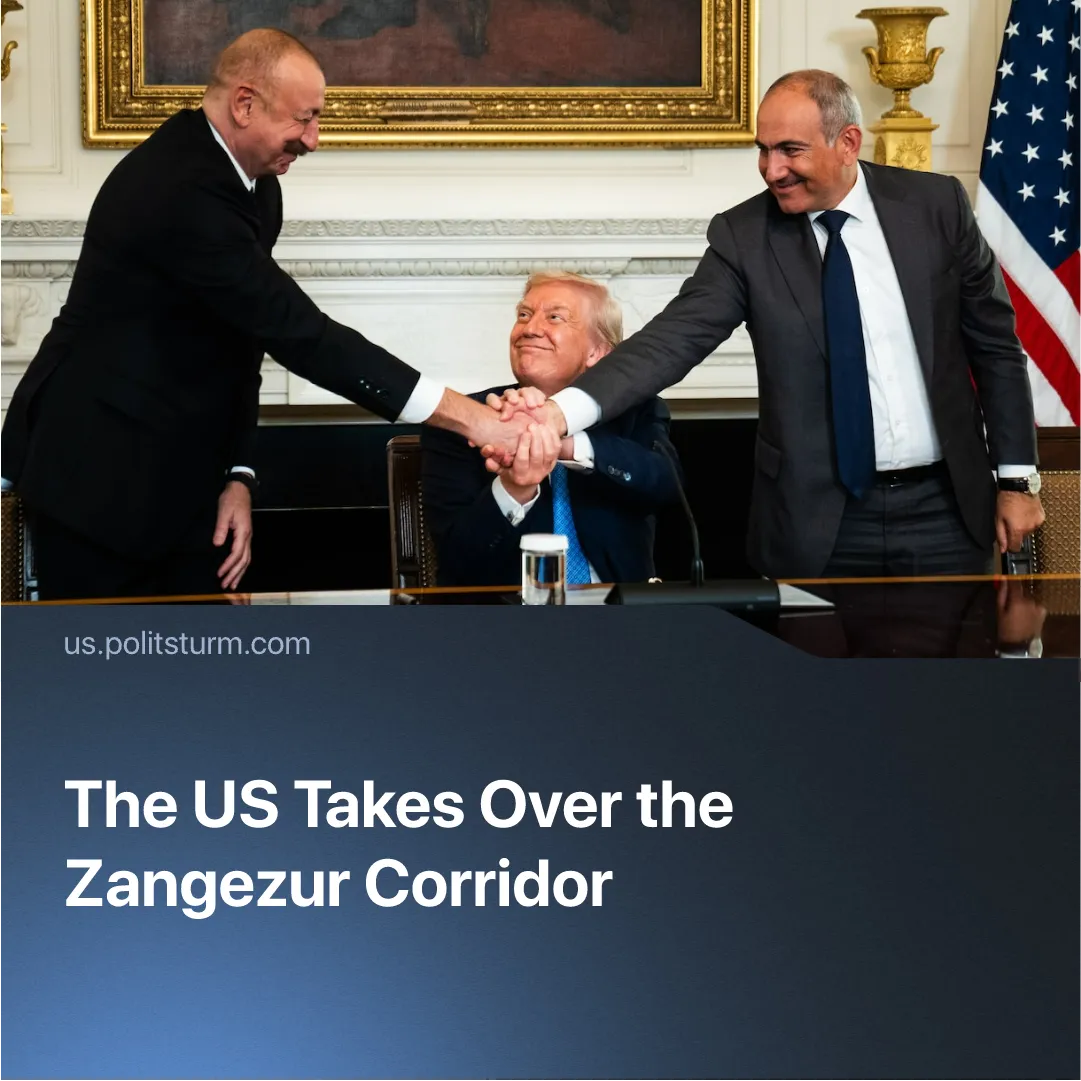Russia has suffered another major defeat as the US takes control of the Zangezur corridor, shortly after direct peace talks with the US were confirmed.
Details. On August 8, 2025, Donald Trump hosted a meeting at the White House during which Armenian Prime Minister Nikol Pashinyan and Azerbaijani President Ilham Aliyev signed an agreement to end hostilities and mutually recognise each other's sovereignty, seemingly resolving the Nagorno-Karabakh conflict.
► The resumption of trade and transport ties between the two countries was also seen as a result of the agreement, as was Azerbaijan’s and Armenia’s request for closure of the OSCE's (Organisation for Security and Co-operation in Europe) Minsk Process, which had been established to oversee the Nagorno-Karabakh conflict.
► The US has been granted the exclusive right to develop and manage the 32-kilometre transport and infrastructure Zangezur Corridor — now called the “Trump Route for International Peace and Prosperity” (TRIPP) — for 99 years.
► The corridor runs from the Azerbaijani core through southern Armenia to Nakhichevan. Azerbaijan now has direct land access to Turkey, independent of Armenia and Iran, and has gained new trade, energy, and communication routes.
► Leaders of both Azerbaijan and Armenia have reacted positively to the peace deal and the TRIPP corridor.
► Russia’s Minister of Foreign Affairs, Zakharova, said that they support the agreement and that it “merits a positive assessment”, whilst also criticising the parties for misrepresenting their intentions, believing that the conflict could be resolved without external involvement.
► Iran’s top adviser to the Supreme Leader, Ali Akbar Velayati, said that they will block the creation of the corridor “with or without Russia.” He called the plan a “political treachery” and added that this passage “will not become a getaway for Trump’s mercenaries — it will become their graveyard”.
Context. The Armenian–Azerbaijani conflict dates back to 1905. It was resolved under the Soviets through diplomacy, but reignited after capitalist restoration in 1988, leading to unrest, 30,000 deaths, and mass displacement. Russia has since brokered multiple ceasefires — in 1994, 2020, and 2023 — but its ability to enforce them has weakened as resources were diverted to the SMO.
► Under his current term, Trump has sought to present himself as a global peacemaker, intervening in major conflicts including India–Pakistan, Iran–Israel, Israel-Hamas and the SMO.
► The TRIPP Corridor undermines Iran’s only direct land route to Armenia and the Eurasian Economic Union, while giving the US strong influence over the Middle Corridor, a key Asia–Europe link that bypasses Russia.
► China, through the Belt and Road Initiative, has heavily invested in this route; US control of Zangezur sidelines its plans and blocks a major trade artery.
Important to Know. While hailed as a “miracle”, the deal is no lasting solution. Capitalists inevitably foster chauvinist tensions, which are exploited to expand markets and consolidate power.
► This marks another major setback for Russian imperialism—alongside Iran’s weakening and the coup against Assad in Syria. A few days later, Putin and Trump confirmed plans for direct talks.
► The takeover also strikes at China’s Belt and Road Initiative, blocking one of its key Eurasian trade routes and sidelining years of Chinese investment in the South Caucasus. By controlling Zangezur, the US deepens the encirclement of the Russian–Chinese bloc.
► Trump’s “peace” initiatives function not as genuine diplomacy, but as tools to restructure global trade in favour of US capital and weaken competing imperialist centres.


